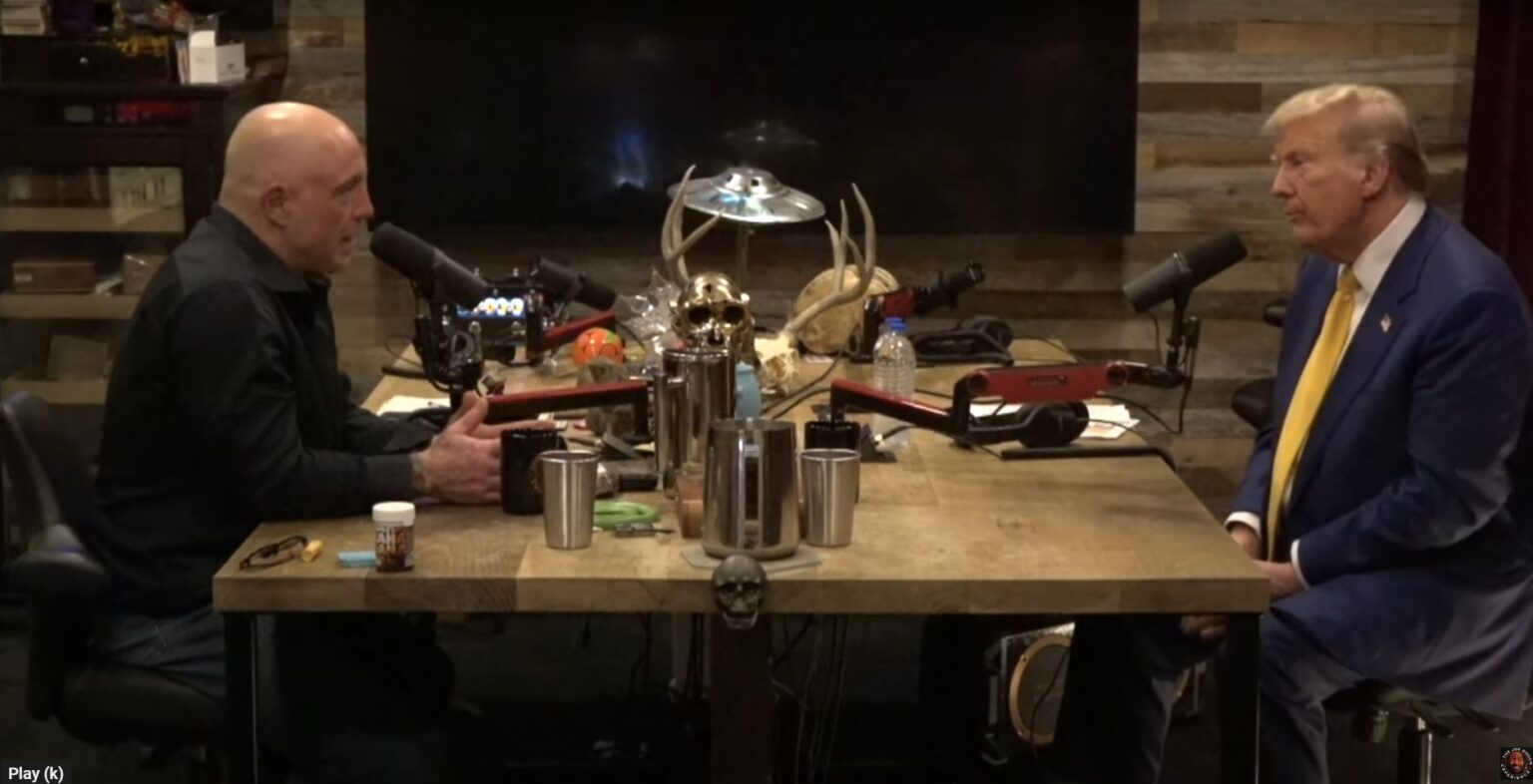On a recent visit to Austin, Texas, former President Donald Trump participated in a much-anticipated podcast interview with Joe Rogan, a well-known figure in the podcasting world. The discussion, which lasted over three hours, came on the heels of a speech Trump delivered focusing on the ongoing migrant crime epidemic. This appearance marked another chapter in Trump’s active campaign trail as he prepared to attend a rally in Michigan later that same night. The juxtaposition of his serious focus on border issues with the informal atmosphere of Rogan’s platform highlighted Trump’s strategy of reaching a broader, younger audience through alternative media.
Joe Rogan, as a podcaster, commands a significant following, boasting 15.7 million followers across platforms, which is a testament to his influence in contemporary media. His reach surpasses the entire population of several key battleground states, making him an essential figure for any politician aiming to connect with the electorate. Trump’s decision to appear on Rogan’s show is reflective of a broader trend where political figures are increasingly turning to non-traditional media to reach potential voters in meaningful ways. The influence of platforms like Rogan’s can’t be understated, especially in an electoral landscape dominated by social media.
After the interview, which was posted on Rogan’s YouTube channel and gained rapid viewership—over 745,000 views within the first hour—it became apparent that Trump’s appearance was not only strategic but also indicative of a changing media landscape. Many viewers eagerly anticipated the discussion, which included a variety of topics beyond the migrant crisis, allowing Trump to present his ideas in a more casual setting. The podcast format allows for extended conversations that can cover nuances often skipped in traditional interview formats, making it a unique opportunity for candidates to connect with voters on a personal level.
In contrast to Trump’s embrace of platforms like Rogan’s, Vice President Kamala Harris notably declined an invitation to participate in a similar interview. This decision may reflect a divergence in communication strategies between the two parties, where Trump’s approach is more focused on engaging with popular but non-traditional media personalities, while Harris and other Democrats may opt for more conventional, controlled interviews with mainstream media outlets. Harris’s absence from such forums raises questions about the effectiveness of traditional media engagement versus the direct and often unfiltered nature of platforms like Rogan’s.
The significant viewer engagement seen during and after the podcast episode is indicative of the current political climate in the United States, where figures like Trump find substantial value in addressing constituents outside of traditional media frameworks. As the political landscape evolves, the strategy of appearing on high-traffic platforms like Rogan’s is likely to become even more prevalent, inviting political discourse into relaxed, conversational formats. The dynamic nature of modern media means that candidates must adapt to connect with an increasingly fragmented audience.
As Trump continues to navigate his campaign, engagements such as the one with Rogan are pivotal. They serve not only to address pressing political issues like border security and crime but also to sustain his visibility and relevance in a fast-paced and ever-changing political arena. The rapid viewership numbers and engagement on Rogan’s platforms exemplify the power of social media in amplifying political discourse, presenting an essential avenue for candidates to share their narratives directly with the electorate amid intense polarization within traditional media outlets.

